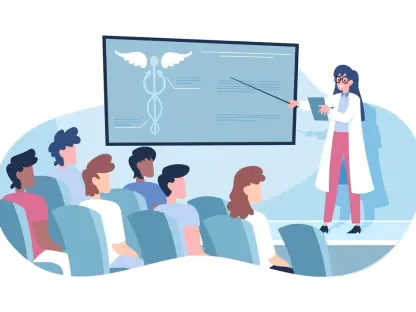Overview of the Crisis in Medicaid Funding
In the heart of American healthcare policy, a storm brews as millions of low-income individuals face uncertainty over access to critical services, with Medicaid, a cornerstone federal-state program, supporting healthcare for over 70 million Americans. Yet, its funding structure is under siege due to recent legislative changes. This pivotal program, designed to bridge the gap for those unable to afford private care, now stands at a crossroads, with new restrictions threatening to unravel decades of progress in public health equity. The current legal battle over these funding cuts has ignited fierce debate, drawing attention from policymakers, healthcare providers, and vulnerable communities alike, as the nation grapples with balancing fiscal priorities against human need.
The significance of federal contributions to Medicaid cannot be overstated, as they often account for a substantial portion of state budgets dedicated to healthcare. These funds enable states to partner with essential community providers, ensuring that services ranging from routine checkups to specialized care remain accessible. Without this financial backbone, many states struggle to maintain the infrastructure needed to serve their most disadvantaged populations, highlighting the urgency of the ongoing dispute over funding allocations.
At the center of this controversy is the One Big Beautiful Bill Act, signed into law on July 4 of this year. Section 71113 of this legislation imposes strict limitations on federal Medicaid funding, specifically targeting certain nonprofit organizations, with a clear focus on reproductive health providers such as Planned Parenthood. Critics argue that the intent behind these restrictions is to curb services tied to abortion, even though federal funds have long been prohibited from directly supporting such procedures, setting the stage for a heated legal and ethical showdown.
Core Legal Challenges to Funding Restrictions
Constitutional Concerns at the Forefront
The legal challenges to Section 71113 have brought several constitutional issues into sharp focus, with lawsuits like Planned Parenthood v. Kennedy and State of California v. HHS leading the charge. Plaintiffs argue that the provision infringes on First Amendment rights by penalizing freedom of association, as it conditions funding on severing ties with specific organizations. This punitive approach, they claim, stifles protected expression and unfairly targets entities based on their affiliations rather than their actions.
Further scrutiny reveals allegations of a breach of the Bill of Attainder Clause, as the law appears to single out identifiable groups for punishment without judicial process. Additionally, claims under the Fifth Amendment’s Equal Protection component assert that the restrictions lack a rational basis and fail to serve a compelling governmental interest. Spending Clause violations are also cited, with states arguing that retroactive and unclear conditions undermine the cooperative federalism inherent in Medicaid, disrupting long-standing agreements.
Judicial responses have been telling, with Judge Indira Talwani of the U.S. District Court for the District of Massachusetts finding a strong likelihood of success on these constitutional claims. Her rulings underscore the potential overreach of federal authority in dictating state healthcare partnerships, setting a precedent that could influence how funding conditions are crafted and enforced in future legislation.
Judicial Outcomes and Ongoing Developments
Significant progress in the legal arena came with preliminary injunctions issued on July 21 and 28 of this year, halting the enforcement of Section 71113 against Planned Parenthood entities. These court orders ensure that federal Medicaid funds continue to flow to these providers, protecting immediate access to care while the broader case unfolds. Such decisions reflect a judicial prioritization of preventing harm over adhering to controversial funding limits.
However, the federal government responded with an appeal to the First Circuit Court of Appeals on August 5, pushing back against the injunctions and defending the law as a reflection of public will on taxpayer fund allocation. Meanwhile, enforcement persists against other entities labeled as “Prohibited Entities” under the Act, creating a patchwork of compliance and uncertainty across different regions and providers.
A parallel lawsuit by a coalition of states, led by California, seeks a more comprehensive resolution, aiming for a declaration of unconstitutionality and permanent injunctions. Filed late in July, this case remains unresolved but represents a collective effort to safeguard Medicaid’s integrity against federal overreach, with potential ramifications for how states navigate similar funding disputes moving forward.
Public Health and Economic Ramifications
The potential fallout from these funding cuts looms large over low-income Medicaid beneficiaries, particularly those reliant on reproductive and preventive health services. Clinics targeted by Section 71113 often serve as primary points of care for contraception, STI testing, and family planning, meaning any disruption could lead to significant gaps in health outcomes for already vulnerable populations. The ripple effects could exacerbate existing disparities, leaving many without viable alternatives.
Economically, states face a dire choice: either allocate scarce state funds to sustain these providers and forfeit federal matching contributions or exclude them entirely from Medicaid networks, risking the collapse of critical healthcare infrastructure. This dilemma strains budgets already stretched thin by competing priorities, potentially forcing cuts to other essential services or tax increases to cover the shortfall.
Court rulings have acknowledged the immediate harm to patients as a key factor in granting injunctions, emphasizing that public health risks outweigh the government’s interest in enforcing the cuts. This recognition highlights the interconnectedness of funding decisions and community well-being, urging a reevaluation of policies that could jeopardize access to care on such a wide scale.
Administrative Hurdles and Enforcement Confusion
Implementing Section 71113 presents a labyrinth of challenges for state agencies tasked with identifying “Prohibited Entities.” The criteria outlined in the Act lack clarity, and comprehensive data on Medicaid payments across states is often unavailable, complicating efforts to determine which organizations fall under the restrictions. This uncertainty increases operational costs as states scramble to educate providers and adjust claims processing systems.
Moreover, the timeline and enforcement authority within the provision remain ambiguous, with no clear designation of whether states or federal bodies like the Centers for Medicare & Medicaid Services hold ultimate responsibility. Such vagueness creates compliance nightmares, as agencies grapple with interpreting and applying rules that could shift with ongoing litigation or legislative amendments.
State responses vary, with places like California and North Carolina issuing guidance to continue processing claims for affected providers under the protection of current injunctions. These actions reflect a pragmatic approach to maintaining healthcare continuity, though they also underscore the broader confusion and inconsistency plaguing the rollout of the controversial funding limits.
Long-Term Implications for Healthcare Policy
The outcome of this legal battle could reshape federal-state dynamics within the Medicaid framework, potentially altering how funding conditions are negotiated and imposed. A ruling against Section 71113 might embolden states to challenge similar federal mandates, reinforcing their autonomy in managing healthcare programs tailored to local needs. Conversely, an upheld restriction could set a precedent for tighter federal control over state partnerships.
Broader debates on reproductive rights and federal spending priorities are also at play, influencing future policy directions and litigation. The tension between restricting funds for certain services and ensuring comprehensive care access fuels ideological divides, likely driving legislative proposals and court challenges for years to come, especially as public opinion on these issues evolves.
Looking ahead, higher court decisions or legislative adjustments could fundamentally alter Medicaid funding structures, impacting access to care for millions. If current trends hold, there may be a push toward more transparent and equitable funding mechanisms, though the path to such reforms remains fraught with political and legal obstacles that stakeholders must navigate with caution.
Reflecting on the Path Forward
The legal skirmishes over Medicaid funding cuts this year underscore a profound clash between constitutional principles, public health needs, and governmental authority. Courts have leaned heavily toward protecting patient access through injunctions, signaling deep concerns about the immediate consequences of restrictive policies. Economic pressures on states and administrative chaos further complicate the landscape, revealing flaws in the design and execution of the controversial legislation.
Moving forward, stakeholders must prioritize close monitoring of litigation outcomes, as decisions in the First Circuit and beyond will set critical precedents. Enhanced data sharing between federal and state entities could mitigate enforcement ambiguities, ensuring clearer identification of affected providers. Additionally, preparing contingency plans for potential funding disruptions stands as a prudent step, safeguarding vulnerable populations against sudden gaps in care.
Ultimately, a collaborative approach between policymakers and healthcare advocates emerges as essential to crafting sustainable solutions. By addressing both the legal vulnerabilities and practical challenges exposed in this dispute, there lies an opportunity to rebuild trust in Medicaid’s mission, ensuring it remains a lifeline for those most in need amidst shifting political tides.









